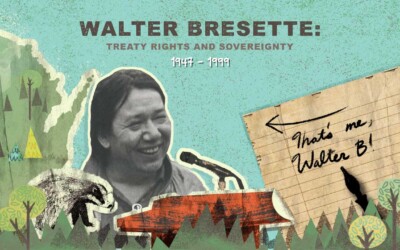FAQ
- How do I start integrating American Indian studies resources?
- Which is the correct term – American Indian, Native American, or First Nations?
- Who is an American Indian or Native American?
- Is there a difference between tribe, nation, community, and band?
- What does it mean for a tribal nation to be federally recognized?
- How many federally recognized tribal nations are in Wisconsin and the United States?
- What is tribal sovereignty?
- What are Indian treaty rights?
- What is an Indian reservation?
- What types of governments exist within Wisconsin and the United States?
- Which American Indian languages are spoken in Wisconsin?
- What is Wisconsin Act 31?
Other Resources
Still have questions about American Indians? You may find these resources useful:
Bureau of Indian Affairs FAQ: https://www.bia.gov/FAQs/
Treuer, Anton. Everything You Wanted to Know About Indians but Were Afraid to Ask (2012).
How do I start integrating American Indian studies resources?
To begin, focus your instruction by asking three questions:
- How long have humans lived here?
- On whose ancestral land is my school located?
- Which tribe(s) are located closest to my school today?
Feel free to reach out to us or the educators listed on the Exemplars page for more tips!
You can also use the Placed-Based Education poster and questions found here.
Which is the correct term – American Indian, Native American, or First Nations?
All three of these terms are often used interchangeably, and use is largely determined by personal preference. If possible, forgo any of the terms and use tribal nation’s name and self-reference term (e.g., Ho-Chunk, Menominee, Lac du Flambeau Ojibwe, etc.). If you don’t know which term to use, it’s okay to ask!
Who is an American Indian or Native American?
Tribal membership is required by the federal government, and each tribe sets their own membership requirements for enrolled citizens. However, enrollment is not the only factor that determines whether someone is American Indian. Connection to one’s tribal community, culture, heritage, language, and history are also important. Additionally, some American Indians may possess blood quantum from several tribes, yet are not enrolled because they do not meet any single tribe’s enrollment criteria.
Is there a difference between tribe, nation, community, and band?
Each term describes a sociopolitical unit, and usage varies depending on the group’s preference. Much like the terms American Indian, Native American, and First Nations, the terms are sometimes used interchangeably.
What does it mean for a tribal nation to be federally recognized?
A federally recognized tribe is an American Indian nation that has a direct government-to-government relationship with the United States. Wisconsin currently has 11 federally recognized tribes. One Wisconsin tribe, the Brothertown Nation, is not recognized by the state or federal government.
How many federally recognized tribal nations are in Wisconsin and the United States?
In the United States, there are 574 federally recognized American Indian/Alaska Native nations. Wisconsin and Michigan are home to the most American Indian nations east of the Mississippi River.
The eleven federally recognized First Nations in Wisconsin are:
- Bad River Band of Lake Superior Chippewa
- Forest County Potawatomi
- Ho-Chunk Nation
- Lac Courte Oreilles Band of Lake Superior Chippewa
- Lac du Flambeau Band of Lake Superior Chippewa
- Menominee Indian Tribe of Wisconsin
- Oneida Nation
- Red Cliff Band of Lake Superior Chippewa
- Saint Croix Chippewa Indians of Wisconsin
- Sokaogon Chippewa Community, Mole Lake Band of Lake Superior Chippewa
- Stockbridge-Munsee Community Band of Mohican Indians
Note, the Brothertown Indian Nation also calls Wisconsin home, but is not a federally or state recognized tribal nation. They were originally from the state of New York.
What is tribal sovereignty?
Tribal sovereignty is the inherent right to self-governance. Tribal sovereignty is a right exerted by First Nations and cannot be given or taken away.
What are Indian treaty rights?
From 1778 to 1871, the United States (US) entered into treaties with tribal nations. These agreements, or contracts, recognized and established unique sets of retained rights, benefits, and conditions, and they are considered to be “the Supreme Law of the Land,” as mentioned in the US Constitution. These signed treaties are considered the foundation of federal Indian law in the US. Treaties are also the basis of the federal trust responsibility between the US federal government and American Indian nations.
What is an Indian reservation?
A federal Indian reservation is an area of land reserved for a tribal nation(s) due to an executive order, a federal statute, an administrative action, or a signed treaty or other agreement with the United States (US). The US federal government holds title to the Indian reservation land, which is approximately 56.2 million acres, in trust on behalf of the First Nation(s). Not every federally recognized American Indian nation has a reservation in the US. Other names for reservations include pueblos, rancherias, missions, and villages.
What types of governments exist within Wisconsin and the United States?
Within Wisconsin and the United States, the following governments exist: local (e.g., city or town), county, state, federal, and tribal governments. Each of these governments have their own elected officials, written constitution, government, code of laws, etc., that govern them.
Which American Indian languages are spoken in Wisconsin?
Wisconsin is home to six languages from three different language families.
- Algonquain language family: Menominee, Ojibwe, and Potawatomi
- Siouan language family: Ho-Chunk
- Iroquoian language family: Oneida and Stockbridge
Due to assimilation policies of the 19th and 20th centuries, many American Indian people do not speak their indigenous language, but language revitalization efforts exist today.
What is Wisconsin Act 31?
Wisconsin Act 31 is the statutory requirement that all school districts provide instruction in the history, culture, and tribal sovereignty of the American Indian nations in the state. This requirement represents our state’s commitment to serve our diverse communities and the American Indian tribes and bands who reside within Wisconsin’s borders.


